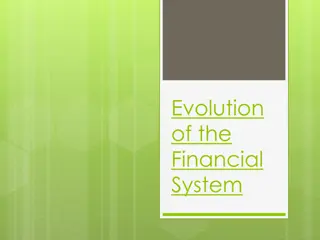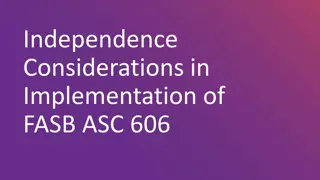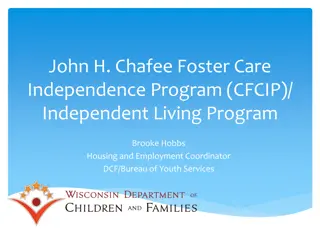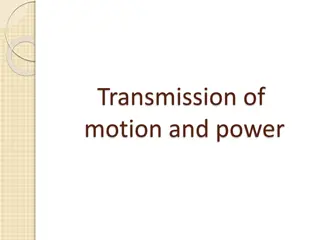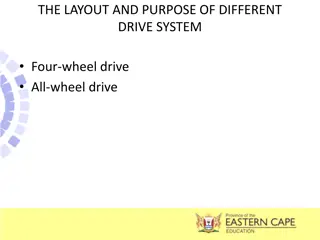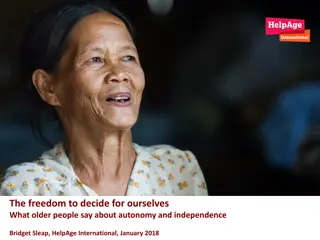
Towards Energy Independence: CoCT's Drive for Energy Security
Cape Town is working towards energy independence with a vision of a transparent energy market promoting economic development. The city aims to mitigate load shedding and ensure critical services have backup energy. Strategies include leveraging Steenbras Pumped Storage and engaging Independent Power Producers for sustainable energy solutions.
Download Presentation

Please find below an Image/Link to download the presentation.
The content on the website is provided AS IS for your information and personal use only. It may not be sold, licensed, or shared on other websites without obtaining consent from the author. If you encounter any issues during the download, it is possible that the publisher has removed the file from their server.
You are allowed to download the files provided on this website for personal or commercial use, subject to the condition that they are used lawfully. All files are the property of their respective owners.
The content on the website is provided AS IS for your information and personal use only. It may not be sold, licensed, or shared on other websites without obtaining consent from the author.
E N D
Presentation Transcript
Towards Energy Independence CoCTs Drive for Energy Security of Supply Kadri Nassiep - Executive Director: Energy 25 August 2023
2 Energy Vision for the City of Cape Town An open, transparent and vibrant energy market characterized by resource efficiency, cost competitiveness and climate resilient options that promotes inclusive economic development and healthy, thriving communities and ecosystems
Goals Assumption: Load-shedding will continue for at least the next 5 years with an average severity of Stage 4* City-wide mitigation Develop the capability to mitigate up to 4 stages of load- shedding in City Supply Areas by 2026 Critical City Load Mitigation Ensure critical municipal services have the back-up energy needed to operate during extended periods of load-shedding Household and Business Mitigation Support households and businesses to build their energy resilience and limit disruptions associated with load-shedding *Likelihood of up to 10 years of LS with increased frequency of load-shedding Stages 6-8
Steenbras Optimisation Utilisation of Steenbras Pumped Storage is key lever to mitigate against load-shedding Currently can mitigate up to two LS stages under certain scenarios Additional measures to increase Steenbras LS Mitigation capacity: One stage of load shedding in summer is 40 MW One stage of load shedding in winter is 60 MW One Steenbras unit is 40 MW One unit can mitigate one stage in summer One and a half units can mitigate one stage in winter. Steenbras Optimisation is single biggest Load-shedding Mitigation lever available to City in short-term
Independent Power Producer Program: Embedded and Dispatchable IPP Dispatchable IPP Program Embedded IPP Program Targeting renewable energy, but other technologies not excluded Located within the City s electricity grid Projects Minimum of 5MW AC Targeting combined capacity of 200MW through appointment of multiple IPPs Currently in CEL phase Dispatchable technologies include battery storage and gas to power Size: 480MW, with a minimum capacity on a shorter term contract 1-step process, available connection points identified, TA on-board (appointed in January); PPA prioritised, risk appropriately allocated Wheeling will be allowed First power expected 2026
Demand Response Programme (Power Heroes) The initiative is based on incentivising residents for voluntary energy saving, so that City-supplied customers can be protected from the impacts of load-shedding. Third-party Aggregators will sign up Power Heroes on a voluntary basis, consisting of residential and small- scale commercial customers Aggregators will remotely switch off agreed-to non-essential power-intensive devices of the Power Heroes at peak times Aims to reduce demand by up to 60MW (one stage of LS in winter) This Demand Response tender was issued October 2022, currently in evaluation phase to be awarded in the coming months 7 year contract How it works: Third party aggregators call on the Power Heroes to switch off City asks for reduction in usage to protect its customers Power Heroes help Cape Town mitigate load- shedding
11 Loadshedding Mitigation (Phase I) Supply and demand steps to mitigate impact of loadshedding (Jan 2022 Dec2023) Energy Equation Mitigation Action Intended Effect Comment Reserve more Steenbras units for loadshedding mitigation; optimise its operating regime to minimize financial impact Higher Steenbras energy output available for LS mitigation, subject to dam levels - Requires no capital - Potential financial impact (arbitrage) Supply Side Activate all City-owned RE and other generation (Atlantis; SSEG; LfGtP; Mini-hydro, OCGTs) Additional energy sources for the City to draw from during periods of low/negative RM - Can offset Steenbras midday generation need - Daily gen forecast critical Load curtailment campaign with LPU s to reduce consumption upon request in exchange for tariff reduction / lower levels of loadshedding Instantaneous demand reduction, localised to industry (most citizens unaffected) -Short term measure that limits broad impact of LS -Impact on electricity sales revenues Demand Side Power Heroes residential Demand Response programme Instantaneous reduction in demand -Potential public opposition -Comms network needed CoCT network has to be designed/adapted to enable the implementation of the LSMP
12 Loadshedding Mitigation (Phase II) Supply and demand steps to mitigate impact of loadshedding (Jan 2024 Dec2025) Energy Equation Mitigation Action Intended Effect Comment Secure PPA with Solar and Hybrid IPPs (RE, BESS, CCGT) at lowest possible LCOE - Solar IPP: Non-dispatchable but additional energy source available quickly - Hybrid IPP: Dispatchable power source available quickly (2-3 years post-PPA) - Solar: Tariff should be lower than Eskom - Hybrid: Tariff will be much higher than Eskom (~ R2/kWh) - Long term agreement required (15-20 years) Supply Side Implement utility scale BESS Dispatchable power source deployed quickly, can serve multiple uses - Economics improved when paired with RE - Cannot run long periods - Scalable Expand EE to high usage CoCT facilities Lower demand allows more Steenbras pumping Impact on operations to be carefully managed Demand Side Broaden Power Heroes Programme to reduce Res loads other than geysers Instantaneous reduction in demand Large communications network upgrades and customer buy-in needed CoCT network has to be designed/adapted to enable the implementation of the LSMP
13 Phasing of Supply and Demand Levers Phasing of supply/demand levers spread over 40month period (Jan 22 Dec 25) Full suite of options can be available by end 2025 to mitigate LS to agreed extent Enabling network projects and associated timelines will impact program Lever 2022 2023 2024 2025 H1 H2 H1 H2 H1 H2 H1 H2 Steenbras City-Owned GT DR (ILS) City-Owned RE Enhanced EE Program RE IPP Hybrid IPP
SSEG Applications Monthly Growth 2020-2023 Approved systems SSEG Applications Key Stats Approved grid-tied: >3500 (100MVA) Approved off-grid/standby: >1500 (6.2MVA) Capacity = >106 MVA SSEG Applications received = 10993 SSEG 2023 Applications so far = 2333 (30 April 2023) Monthly SSEG Applications SSEG Applications 800 Monthly SSEG Applications Increase in Load shedding 700 600 500 400 300 200 100 0 2020 Qtr1 Jan 2020 Qtr1 Feb 2020 Qtr1 Mar 2020 Qtr2 Apr 2020 Qtr2 May 2020 Qtr2 Jun 2020 Qtr3 Jul 2020 Qtr3 Aug 2020 Qtr3 Sep 2020 Qtr4 Oct 2020 Qtr4 Nov 2020 Qtr4 Dec 2021 Qtr1 Jan 2021 Qtr1 Feb 2021 Qtr1 Mar 2021 Qtr2 Apr 2021 Qtr2 May 2021 Qtr2 Jun 2021 Qtr3 Jul 2021 Qtr3 Aug 2021 Qtr3 Sep 2021 Qtr4 Oct 2021 Qtr4 Nov 2021 Qtr4 Dec 2022 Qtr1 Jan 2022 Qtr1 Feb 2022 Qtr1 Mar 2022 Qtr2 Apr 2022 Qtr2 May 2022 Qtr2 Jun 2022 Qtr3 Jul 2022 Qtr3 Aug 2022 Qtr3 Sep 2022 Qtr4 Oct 2022 Qtr4 Nov 2022 Qtr4 Dec 2023 Qtr1 Jan 2023 Qtr1 Feb 2023 Qtr1 Mar 2023 Qtr2 Apr
Simplified and Automated SSEG Application System Aim Benefits To develop a streamlined and simplified online application portal/system to make it easier for customers to register their SSEG systems Improved user experience Faster turnaround times Household Load-shedding resilience How Develop standardised SSEG system configurations Simplified application process Faster permission to install approvals Easier stock and timeline management Develop online application system Increase in safe and legal SSEG systems Reduced risk on the distribution network and CCT workers Lessened admin burden and easier application tracking Stakeholder Engagement and Communications






